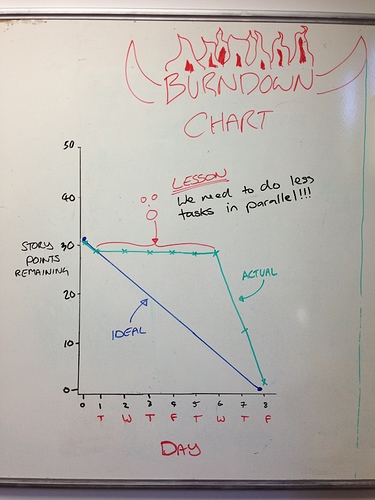I kind of wanted to give an update and report back on this thread every now to use it as sort of a coach/mentor as my team goes through this transition.
Yesterday would have been the start of a new Sprint, but we instead switched over to a Kanban board after @mccallam2’s encouraging words. We had a lot of healthy discussions about extending the duration of each Sprint and adding a regression period back in, but the team felt we had already been down that path when we did a Sprint/Sprint/Regression Week pattern.
First off - @Scrummando, what does “Lead Time” mean on the graphic you posted? And @mccallam2, I’ve never heard the term “Shu Team” before, can you elaborate more on that?
Are there any kind of pitfalls I need to be on the lookout for during this transition? Any ground rules I should introduce to make the transition easier?



 ) . That is the main risk in my eyes. If you have great native devs on standby, and plenty of contingency in case that happens, it’s no big deal. But that’s hard to budget for.
) . That is the main risk in my eyes. If you have great native devs on standby, and plenty of contingency in case that happens, it’s no big deal. But that’s hard to budget for. ️ kanban !
️ kanban !